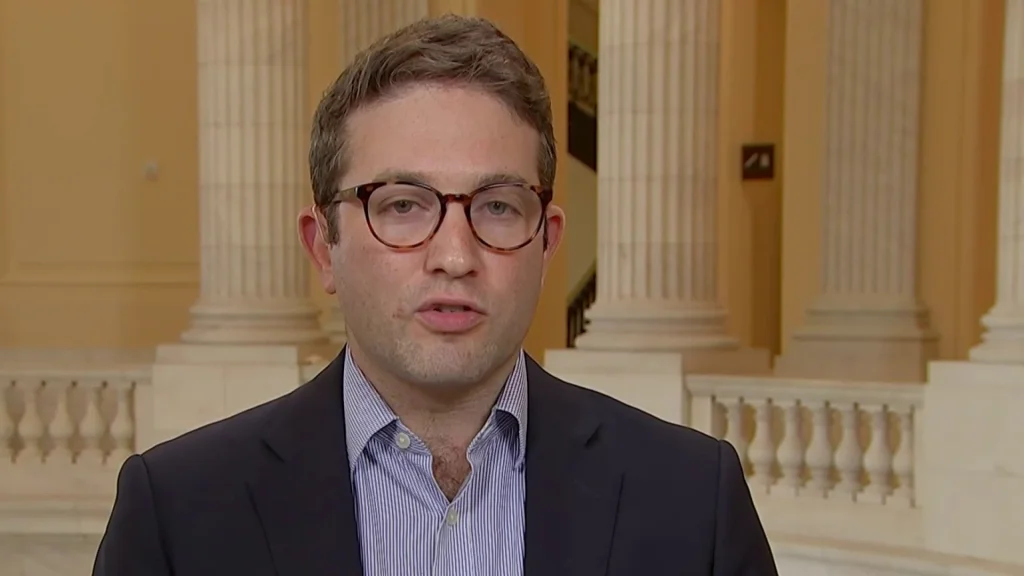
Jake Sherman Twitter:
As Washington enters Day 35 of government paralysis, the Punchbowl News founder's X feed becomes America's essential window into power's inner chambers
The digits on Jake Sherman's Twitter feed don't lie. Over 400,000 followers refresh his timeline obsessively, hunting for the next bombshell from inside the marble halls of Congress. On November 4, 2025, as America woke to Day 35 of a government shutdown now tied for the longest in U.S. history, Sherman delivered what millions were desperately waiting for: hope.
"?NEWS in @PunchbowlNews AM BEHIND THE SCENES: The outlines of a potential deal to end the shutdown are starting to take shape," Sherman posted at 7:43 AM. The message generated 96,500 views within hours, a testament to his singular position as Washington's most trusted congressional chronicler.
But this isn't just about one tweet. Sherman's emergence as a journalist who uses X to report live from the U.S. Capitol to his over 400,000 followers represents something larger: the transformation of political journalism itself, and the questions it raises about where news breaks in an age of platform chaos.
The Man Behind the Breaking News Alert

Sherman didn't build his reputation overnight. The 39-year-old journalist co-founded Punchbowl News in January 2021 alongside Anna Palmer and John Bresnahan after leaving Politico, where he'd spent years as co-author of the influential Playbook newsletter. His background includes chronicling all the major legislative battles of the Obama, Trump and Biden presidencies, giving him an unmatched Rolodex and institutional memory.
What sets Sherman apart isn't just access—it's velocity. The Secret Service's code name for the U.S. Capitol is "Punchbowl," and Sherman's outlet aims to bring an intense focus on the people who power the legislature. His Twitter feed operates like a wire service with personality, delivering congressional scoops in real-time while maintaining journalistic credibility that's increasingly rare on social platforms.
Similar to how Paul Dehner Jr. became the trusted voice for Cincinnati Bengals coverage, Sherman has carved out an essential niche. But instead of sports, his beat is power—and the stakes couldn't be higher.
Breaking News in 280 Characters
Sherman's November 4 scoop about shutdown negotiations illustrated his method perfectly. According to his reporting, senators and aides involved in negotiations indicated some Senate Democrats are warming to Majority Leader John Thune's offer to reopen the government and then hold a vote by a specific date on extending expiring Obamacare subsidies.
The information came before traditional outlets could confirm it. It was specific, sourced, and moved markets—both political and financial. By midday, Sherman appeared on CNBC's Squawk Box to discuss the latest developments, translating his Twitter scoops into television analysis.
But Sherman's Twitter presence goes beyond breaking news. In October, he reported Senate Minority Leader Chuck Schumer's assessment that "every day gets better for us," revealing Democrats' belief the shutdown was trending in their direction. These insider quotes, delivered with minimal editorial interference, give readers the sensation of eavesdropping on power.
Much like Eric Bickel's authentic Twitter presence in sports radio, Sherman's feed feels unfiltered yet professional—a delicate balance few journalists achieve.
The Platform Paradox
Sherman's continued effectiveness on Twitter—now formally known as X—creates an uncomfortable tension for American journalism. Since Elon Musk's acquisition of the platform in October 2022, many journalists have joined masses of users leaving X, citing the prevalence of far-right conspiracy content and racist material. Major outlets including NPR, The Guardian, and La Vanguardia have departed entirely.
Yet Sherman remains, and his presence matters. With over 600 million daily users, X remains an epicenter of mobile news consumption. For political reporters covering fast-moving congressional negotiations, the platform's punchy style—usually just a couple of sentences—allows information to flow with unprecedented speed.
Sherman himself has addressed this dynamic. In April 2025, he explained in an interview with Nieman Journalism Lab why news still breaks on Twitter despite the platform's controversies. His argument: the medium's structure uniquely serves beat reporting where seconds matter and sources expect immediate dissemination.
This isn't Sherman's first brush with platform politics. In October 2020, Twitter suspended him for sharing a New York Post report, with the platform claiming he violated rules against distribution of hacked material. Sherman quickly acknowledged the suspension, explaining his goal was to question the story and seek Biden campaign response, not to spread unverified information. The incident revealed both the power and peril of social platforms as journalistic infrastructure.
The controversy echoes recent debates about platform accountability—reminiscent of situations like FanDuel's outages leaving users stranded, where infrastructure failures expose our dependence on privately controlled digital spaces.
Inside the Shutdown Coverage
Sherman's November reporting provides a masterclass in congressional journalism. As of November 4, the House had been out of session for 46 days, leaving Sherman and his Punchbowl colleagues to navigate a peculiar dynamic: covering a legislative crisis without legislators in town.
His Twitter feed became the connective tissue between scattered power centers. When Rep. Marjorie Taylor Greene called on Senate Majority Leader John Thune to invoke the "nuclear option" to eliminate the filibuster, Sherman's reporting was cited by major outlets. In July 2025, his scoop about President Trump meeting with Thune and Senate Leadership Fund officials in the Oval Office generated 161,000 views.
The shutdown itself has become historic in its devastation. More than 750,000 federal workers have been furloughed or are working without pay, with disruptions hitting food aid programs, child care services, and air traffic control. Against this backdrop, Sherman's tweets serve a civic function—informing not just political junkies but millions of Americans whose lives hang in the balance.
It's a weight that parallels the pressure on other high-stakes communicators, like Brad Biggs navigating NFL controversies, where getting the story right isn't just about clicks—it's about accountability.
The Business Model Behind the Breaking News
Sherman's Twitter presence isn't altruistic—it's strategic. Punchbowl News operates on a subscription model, with premium content costing $300 annually. His free Twitter feed functions as both public service and advertisement, offering enough substance to establish credibility while leaving deeper analysis behind the paywall.
The model appears to be working. Under Sherman and Palmer's leadership at Politico Playbook, the platform more than doubled in revenue and tripled its readership. At Punchbowl, they've created what Sherman describes as a "news community focused on the people, power, and politics in Washington," suggesting a membership approach rather than transactional consumption.
This hybrid model—free breaking news on Twitter, premium analysis via newsletter—represents one possible future for sustainable journalism. It's a future where reporters become brands, platforms become distribution channels, and trust becomes currency.
What the Shutdown Reveals About Power

Sherman's November 4 reporting suggests the shutdown's end may be near, but fragile. Bipartisan talks among rank-and-file senators have picked up, though no spending package is close to moving to the floor. The Obamacare subsidies dispute—Democrats' key demand—remains unresolved.
There's discussion that Senate Minority Leader Schumer could use potential Democratic gubernatorial wins in Virginia and New Jersey on November 4, coupled with a California ballot measure victory, as a potential off-ramp. The shutdown, in other words, may end not through negotiated compromise but through electoral pressure—a reminder that democratic accountability still functions, albeit slowly.
Sherman's role in this drama is complicated. He's simultaneously observer and participant, chronicler and influencer. As he told Columbia Journalism Review, "We are writing about power, the exercise of power, and people abusing power". But by determining which moments deserve the ? emoji, which quotes go viral, which negotiations get exposed, Sherman himself exercises power.
It's a role that requires constant calibration—much like covering sensitive stories where timing and tone determine impact.
The Future of Capitol Journalism
Sherman's Twitter success raises questions about journalism's future infrastructure. If one reporter with 400,000 followers can break news faster than traditional outlets, what does that mean for newsrooms? If X remains essential despite its problems, what happens when the platform's priorities conflict with journalistic norms?
NPR found that leaving X has not negatively affected its site traffic, suggesting audiences will follow quality journalism wherever it lives. Yet Sherman's continued effectiveness on the platform demonstrates that for certain beats—particularly time-sensitive political coverage—X's network effects remain unmatched.
The tension isn't just philosophical. As Dan Gillmor, former San Jose Mercury News columnist, argued, "By actively participating there, journalists are actively helping Musk do these things"—referring to X's role amplifying right-wing extremism. Sherman's presence, then, becomes an implicit endorsement of the platform's continued legitimacy.
But withdrawal has costs too. If credible journalists abandon X, they cede the information battlefield to bad actors. They lose access to sources who still use the platform. They sacrifice reach at a moment when trust in institutions desperately needs rebuilding.
A Reporter in the Arena
On November 4, 2025, as Americans headed to polling stations in key special elections and federal workers entered their 35th day without paychecks, Jake Sherman was where he always is: refreshing sources, typing tweets, breaking news. His feed offered something neither pure optimism nor despair could provide—information.
Senate Majority Leader Thune said "all options are on the table" regarding the Senate's scheduled recess next week, Sherman reported, a signal that perhaps—perhaps—gridlock might crack. It was the kind of detail that matters enormously to those watching, the kind that traditional news cycles might bury in paragraph twelve.
Sherman's Twitter presence ultimately represents a bargain: immediacy and access in exchange for platform dependence and ethical ambiguity. It's a bargain millions of Americans accept every time they refresh his feed, hungry for the next ?, the next glimpse inside rooms where decisions happen.
Whether that bargain serves democracy well remains an open question. What's certain is that Sherman has mastered its terms. In an age of information chaos, he's become something rare and valuable: a signal in the noise.
"We want to chart power," Sherman told Columbia Journalism Review. "Our goal is to chart power and to focus on the one hundred people that matter."
On Day 35 of a historic shutdown, with a nation waiting for resolution, Sherman's Twitter feed continues charting that power, one breaking news alert at a time. And Washington keeps refreshing, waiting for the tweet that announces what comes next.
Related Articles




